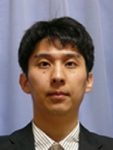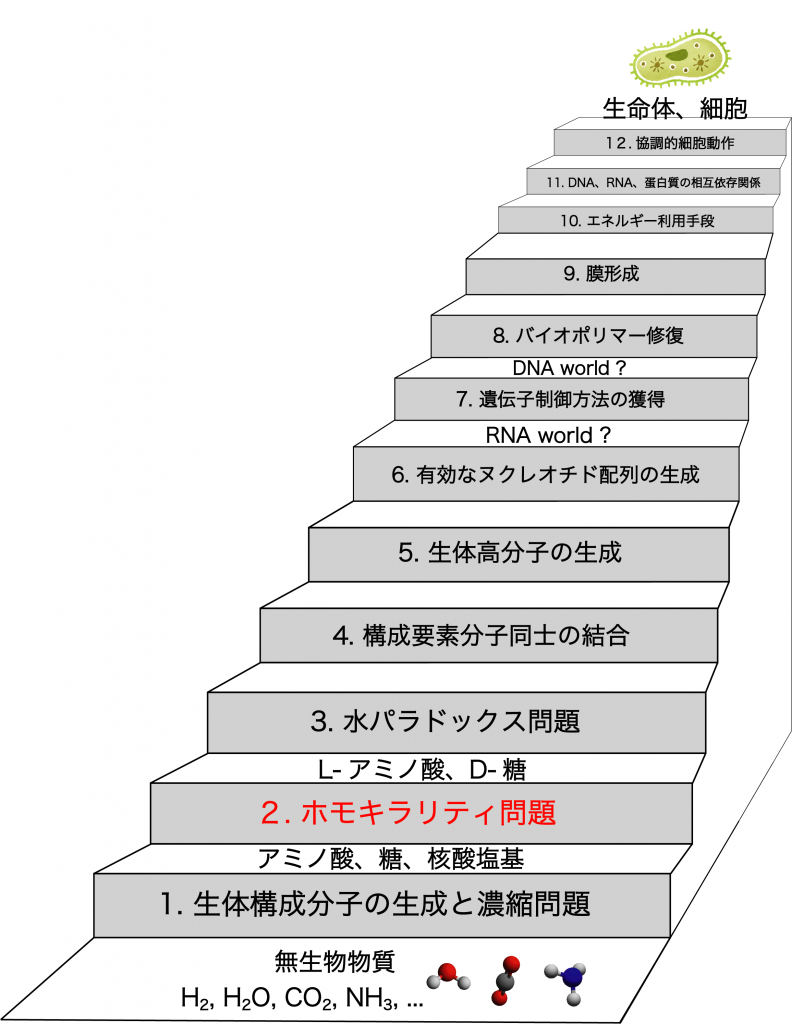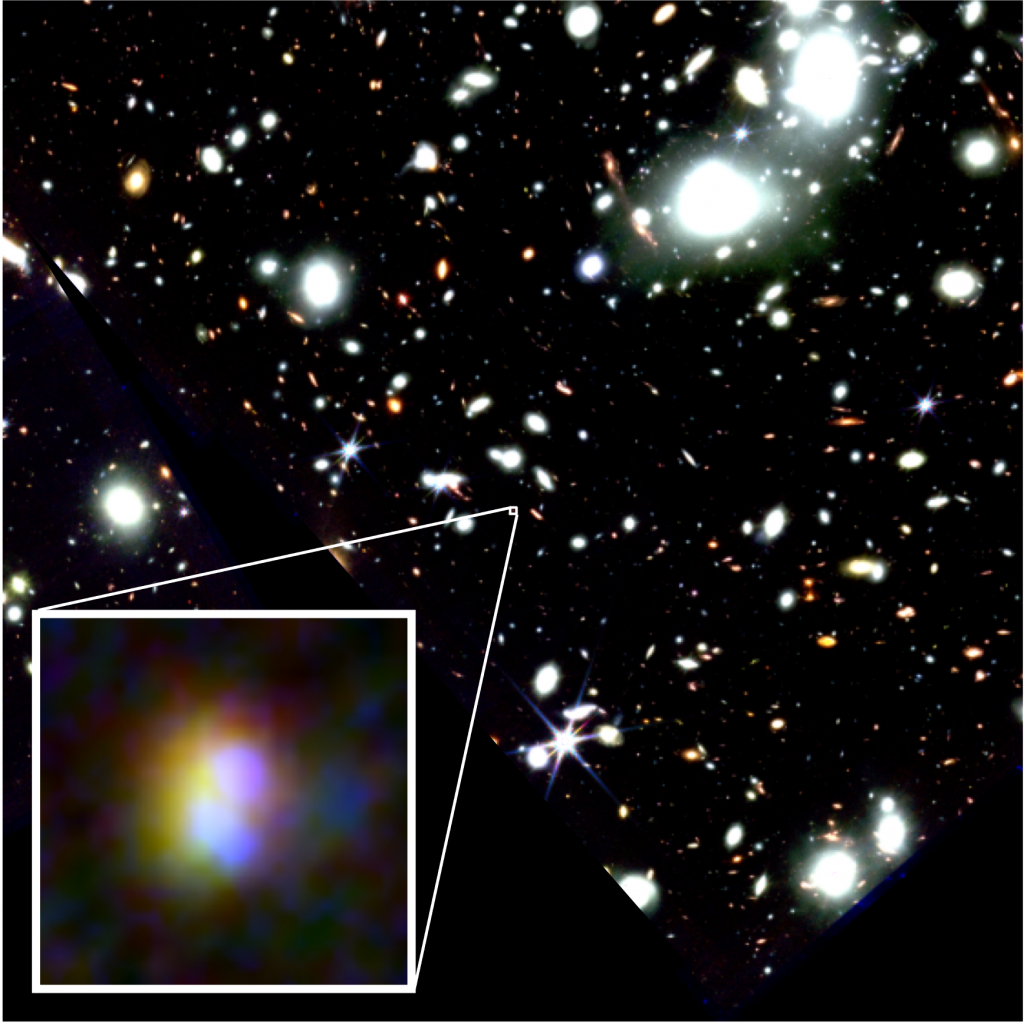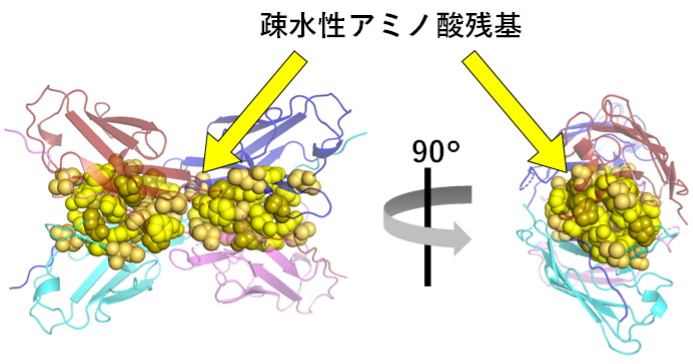We have started a call for MCRP2024.
https://www.ccs.tsukuba.ac.jp/eng/use-computer/mcrp-application/
Deadline: Jan. 23rd, 2024
READ “Call for proposals” and “Guide for submission” carefully, before submitting your proposal.
We have started a call for MCRP2024.
https://www.ccs.tsukuba.ac.jp/eng/use-computer/mcrp-application/
Deadline: Jan. 23rd, 2024
READ “Call for proposals” and “Guide for submission” carefully, before submitting your proposal.
2024年度筑波大学計算科学研究センター「学際共同利用」プログラム(MCRP2023)の公募が始まりました。
詳しくは学際共同利用のページをご覧ください。
奮ってのご応募をお持ち申し上げます。
公募締切:2024年1月23日(火)
Position: Postdoctoral Researcher
Affiliation: Nuclear Physics Research Division, Center for Computational Sciences, University of Tsukuba
Research field and mission: The position is supported by KAKENHI (Grant-in-Aid) for Scientific Research (B) “Properties of inhomogeneous neutron-star matter and origin of pulsar glitches” (PI: T. Nakatsukasa), expecting the successful candidate to join the project to perform theoretical and numerical researches associated with the inhomogeneous nuclear matter.
Start of the term: At the earliest opportunity after April 1, 2024.
Employment Duration: The contract is for a single year and can be renewed until the end of March 2026.
Salary: Based on the University’s payment standards and determined by applicant’s ability and background.
Working hours: Full-time, Discretionary Labor System with social insurances and commuting allowance
Qualifications: Applicants having a Ph.D. degree or those expected to obtain a Ph.D. degree by the expected date of appointment.
Required documents:
Deadline for application: January 21, 2024 (in JST)
Submission of the documents:
Send all the documents 1)-6) by email as a single attached PDF file, to nakatsukasa[at]nucl.ph.tsukuba.ac.jp. ([at] should be replaced by @)
(Recommendation letters can be directly emailed from the recommender, with the subject as “Letter for ****”.)
Contact: Takashi Nakatsukasa
Center for Computational Sciences, University of Tsukuba, Tsukuba 305-8577, Japan
Email: nakatsukasa[at]nucl.ph.tsukuba.ac.jp ([at] should be replaced by @)
Miscellaneous:
公募人員: 研究員 1名
所属組織:計算科学研究センター(原子核物理研究部門)
専門分野:科研費・基盤研究(B)「非一様中性子星物質の物性とパルサー・グリッチ起源の解明」(研究代表者:中務孝、研究分担者:飯田圭、関澤一之)に参画し、非一様核物質の研究を実施する。核物質・原子核構造等の量子多体系に関わる数値的研究の経験があることがあることが望ましい。
着任時期: 2024年4月1日以降のできるだけ早い時期(応相談)
任期:2年、年度更新。
給与・勤務条件: 年俸制(給与等雇用条件は本学の規定による)。候補者の職務経験等を加味し、本学規程に基づいて号俸を決定。常勤、裁量労働制適用。社会保険、及び通勤手当あり。
応募資格: 博士の学位を有する方もしくは着任時期までに取得見込の方
提出書類:
選考方法: 提出書類に基づいた書面選考。必要に応じて(オンライン)面接。
応募期間:2024年1月21日(日)締切
応募方法:提出書類を一つのPDFファイルにまとめて電子メールの添付ファイルとして、nakatsukasa[at]nucl.ph.tsukuba.ac.jp([at]を@に置き換える)に送付。(推薦書は、作成者が直接電子メールで送付しても良い。ただし件名を「***氏推薦書」、「Letter for ***」などとする。)
問合せ先:筑波大学計算科学研究センター 中務 孝
Email: nakatsukasa[at]nucl.ph.tsukuba.ac.jp([at]を@に置き換える)
その他:
Date: 15 January 2024
Time: 14:00-15:30
Venue: Center for Computational Sciences, Workshop Room
Language: English
| 14:00-14:45 | Challenges for Extreme Scale Sparse Matrix computing 【Abstract】 |
| Prof. Serge G. Petiton (University of Lille and CNRS, France) | |
| 14:45-15:30 |
High Performance Learning with the Unite and Conquer Approach 【Abstract】 |
|
Prof. Nahid Emad (University of Paris-Saclay/Versailles, France) |
Exascale machines are now available, based on several different arithmetic (from 64-bit to 16- 32 bit arithmetics, including mixed versions and some that are no longer IEEE compliant) and using different architectures (with network-on-chip processors and/or with accelerators). Brain-scale applications, from machine learning and AI for example, manipulate huge graphs that lead to very sparse non-symmetric linear algebra problems. Moreover, those supercomputers have been designed primarily for computational science, mainly numerical simulations, not for machine learning and AI. New applications that are maturing after the convergence of big data and HPC to machine learning and AI would probably generate post- exascale computing that will redefine some programming and application development paradigms. End-users and scientists have to face a lot of challenge associated to these evolutions and the increasing size of the data.
In this talk, after a short description of some recent evolutions having important impacts on our results, in particular about programming paradigms. I present some results obtained on the still #1 supercomputer of the HPCG list, Fugaku, for sequences of sparse matrix products, with respect to the sparsity and the size of the matrices, on the one hand, and to the number of process and nodes, on the other hand. Then, I introduce two opensource generators of very large data, allowing to evaluate several methods using very large graph-sparse matrices as data sets for several application evaluations.
The ever-increasing production of data requires new methodological and technological approaches to meet the challenge of their effective analyses. We highlight the omnipresence of certain linear algebra methods such as the eigenvalue problem or more generally the singular value decomposition in machine learning techniques. A new machine learning approach based on Unite and Conquer methods, used in linear algebra, will be presented. The important characteristics of this intrinsically parallel and scalable technique make it very well suited to multi-level and heterogeneous parallel and/or distributed architectures. We also highlight the very strong interactions between machine and deep learning methods and sparse linear algebra and present a promising approach in this area. Experimental results demonstrating the interest of these approaches for efficient data analysis in the case of clustering, cybersecurity and road traffic simulation will be presented.
Coordinator : Boku Taisuke
第137回計算科学コロキウムを開催いたします。多数のご来聴をお待ちしております。
概要: 第137回計算科学コロキウム
日時: 2024年1月15日(月) 14:00-15:30
場所: 計算科学研究センター ワークショップ室
言語: English
| 14:00-14:45 | Challenges for Extreme Scale Sparse Matrix computing 【Abstract】 |
| Prof. Serge G. Petiton (University of Lille and CNRS, France) | |
| 14:45-15:30 |
High Performance Learning with the Unite and Conquer Approach 【Abstract】 |
|
Prof. Nahid Emad (University of Paris-Saclay/Versailles, France) |
Exascale machines are now available, based on several different arithmetic (from 64-bit to 16- 32 bit arithmetics, including mixed versions and some that are no longer IEEE compliant) and using different architectures (with network-on-chip processors and/or with accelerators). Brain-scale applications, from machine learning and AI for example, manipulate huge graphs that lead to very sparse non-symmetric linear algebra problems. Moreover, those supercomputers have been designed primarily for computational science, mainly numerical simulations, not for machine learning and AI. New applications that are maturing after the convergence of big data and HPC to machine learning and AI would probably generate post- exascale computing that will redefine some programming and application development paradigms. End-users and scientists have to face a lot of challenge associated to these evolutions and the increasing size of the data.
In this talk, after a short description of some recent evolutions having important impacts on our results, in particular about programming paradigms. I present some results obtained on the still #1 supercomputer of the HPCG list, Fugaku, for sequences of sparse matrix products, with respect to the sparsity and the size of the matrices, on the one hand, and to the number of process and nodes, on the other hand. Then, I introduce two opensource generators of very large data, allowing to evaluate several methods using very large graph-sparse matrices as data sets for several application evaluations.
The ever-increasing production of data requires new methodological and technological approaches to meet the challenge of their effective analyses. We highlight the omnipresence of certain linear algebra methods such as the eigenvalue problem or more generally the singular value decomposition in machine learning techniques. A new machine learning approach based on Unite and Conquer methods, used in linear algebra, will be presented. The important characteristics of this intrinsically parallel and scalable technique make it very well suited to multi-level and heterogeneous parallel and/or distributed architectures. We also highlight the very strong interactions between machine and deep learning methods and sparse linear algebra and present a promising approach in this area. Experimental results demonstrating the interest of these approaches for efficient data analysis in the case of clustering, cybersecurity and road traffic simulation will be presented.
世話人: 朴泰祐
Position: Postdoctoral Researcher
Affiliation:
Nuclear Physics Research Division, Center for Computational Sciences, University of Tsukuba
Research field and mission:
The position is supported by JST Exploratory Research for Advanced Technology program “ERATO Sekiguchi Three-Nucleon Force Project” (the TOMOE Project), expecting the successful candidate to join the project as a member of Quantum Many-body Precise Computation Group.
https://www.jst.go.jp/erato/research_area/ongoing/jpmjer2304.html
Perform theoretical and numerical researches associated with the TOMOE project. Experiences in researches in nuclear structure/reaction and numerical/computational approaches to quantum many-body theory are desired.
Start of the term: At the earliest opportunity after April 1, 2024.
Employment Duration:
The contract is for a single year and can be renewed until the end of March 2029 at the maximum, depending on the evaluation. However, the renewable period may be subject to change depending on the candidate’s ability, workload at the time of expiration of the contract, work performance, work attitude, and the continuation of the budget on which the employment is based.
Salary: Based on the University’s payment standards and determined by applicant’s ability and background; roughly 4M-7M JPY
Working hours: Full-time, Discretionary Labor System
Social insurances, commuting allowance
Qualifications: Applicants having a Ph.D. degree or those expected to obtain a Ph.D. degree by the expected date of appointment.
Required documents:
1) CV including contact information
2) List of research achievements (Mark three major publications)
3) Research history and research plans
4) Names, affiliations, and contact information for two persons who can give their opinions on the applicant (or two letters of recommendation)
5) Possible date of appointment
6) Consent to Processing and Extraterritorial Transfer of Personal Data under GDPR (only required for persons located in the countries that make up the European Economic Area or in the United Kingdom of Great Britain and Northern Ireland. The template form can be downloaded from https://www.ccs.tsukuba.ac.jp/reqdocuments/ )
Document screening: (Online) interview may be performed.
Deadline for application: January 18, 2024 (in JST)
Submission of the documents:
(1) Submit via JREC-in portal
URL: https://jrecin.jst.go.jp/seek/SeekJorDetail/Changelang?id=D123121311&lang=1
If (1) is difficult,
(2) Send all the documents 1)-6) by email as a single attached PDF file, to apply[at]nucl.ph.tsukuba.ac.jp. ([at] should be replaced by @)
Recommendation letters can be directly emailed from the recommender, with the subject as “Letter for ****”.
Contact:
Takashi Nakatsukasa
Center for Computational Sciences, University of Tsukuba, Tsukuba 305-8577, Japan
Email: apply[at]nucl.ph.tsukuba.ac.jp ([at] should be replaced by @)
Miscellaneous:
– After screening of documents, an online interview will be conducted if needed.
– Our center has been certified as a Joint Usage / Research Center by the Ministry of Education, Culture, Sports, and Technology, and promotes interdisciplinary computational sciences. The University of Tsukuba conducts personnel selection in compliance with the Equal Employment Opportunity Act.
– Based on the “Foreign Exchange and Foreign Trade Act,” our university has established the “Security Export Control Regulations,”. We conduct strict examinations, when we employs foreigners, people from foreign universities, companies, government agencies, etc.
公募人員: 研究員 1名
所属組織:計算科学研究センター(原子核物理研究部門)
専門分野:
JST戦略的創造研究推進事業「ERATO 関口三体核力プロジェクト」(通称:TOMOEプロジェクト)に、量子多体精密計算グループのメンバーとして参画。プロジェクトについては以下を参照。
https://www.jst.go.jp/erato/research_area/ongoing/jpmjer2304.html
(科研費等の他の研究資金の獲得や研究機関における研究・教育業務に従事できる可能性あり)
原子核構造・反応に関わる専門的知識に加え、数値的研究の経験があることがあることが望ましい。
着任時期: 2024年4月1日以降のできるだけ早い時期(応相談)
任期:年度更新、評価により最長2029年3月31日まで。ただし、予算の存続状況等により再契約可能期間が変更になる可能性あり。
給与・勤務条件: 年俸制(給与等雇用条件は本学の規定による)。候補者の職務経験等を加味し、本学規程に基づいて号俸を決定。
常勤、裁量労働制適用。社会保険、及び通勤手当あり。
応募資格: 博士の学位を有する方もしくは着任時期までに取得見込の方
提出書類:
1) 履歴書(含連絡先)
2) 全業績リスト(主要論文3編に印)
3) 研究の概要及び着任後の研究計画
4) 本人についての意見を求め得る方2名の氏名及び連絡先、もしくは推薦書2通
5) 着任可能時期
6) EU―般データ保護規則(GDPR)に基づく個人データの取扱い及び域外移転に関する同意書
(欧州経済領域の構成国及び英国在住者のみ必ず提出、本学所定様式
https://www.ccs.tsukuba.ac.jp/reqdocuments/ )
選考方法:
提出書類に基づいた書面選考。必要に応じて(オンライン)面接。
応募期間:2024年1月18日(木)締切
応募方法:
(1) JREC-in portal から提出
URL: https://jrecin.jst.go.jp/seek/SeekJorDetail/Changelang?id=D123121311&lang=0
これが困難な場合には、
(2) 提出書類を一つのPDFファイルにまとめて電子メールの添付ファイルとして、apply[at]nucl.ph.tsukuba.ac.jp([at]を@に置き換える)に送付。
推薦書は、作成者が直接電子メールで送付しても良い。ただし件名を「***氏推薦書」、「Letter for ***」などとする。
問合せ先:
筑波大学計算科学研究センター 中務 孝
Email: apply[at]nucl.ph.tsukuba.ac.jp([at]を@に置き換える)
その他:
・応募書類に含まれる個人情報は、本人事選考のみに使用し、他の目的には一切使用しません。選考終了後はすべての個人情報を適切に破棄します。
・計算科学研究センターは、文部科学省共同利用・共同研究拠点に認定されており、計算機共同利用を含む学際計算科学を推進しています。筑波大学では男女雇用機会均等法を遵守した人事選考を行っています。
・本学では、「外国為替及び外国貿易法」に基づき、「国立大学法人筑波大学安全保障輸出管理規則」を定め、外国人、外国の大学・企業・政府機関等出身者又は特定類型該当者の雇用に際し厳格な審査を実施しています。
計算科学研究センター(CCS)に所属する教員・研究員の研究をわかりやすく紹介する「研究者に聞くー研究トピックス」に「vol.15 生命の起源を宇宙に探る」を公開しました。
庄司 光男 教授
生命科学研究部門 生命機能情報分野
庄司先生は、生命科学研究部門の研究者です。生体内で特に重要なはたらきを担うタンパク質や核酸に注目し、生命の根本原理を探求しています。最近の興味の対象は、多くの謎に包まれている“生命の起源”。その謎のひとつを世界で初めて解き明かしました。
(2023.12.15 公開)
タンパク質は生物を構成する重要な分子であり、20種類のアミノ酸の組み合わせで作られています。このうち19種類のアミノ酸は、鏡で写した分子とはそっくりだけれども決して重なることのない鏡像異性体(L体・D体)を持つキラル分子1)です。実験室で合成するとL体とD体は等量ずつ生成されますが、生体内ではL体のみが選択的に使われています。どうしてL体のみが使われるようになったのかについては、これまで解明されていませんでした。
この問題を解決する仮説のひとつに、宇宙起源説があります。一部の隕石からL体アミノ酸が過剰に検出されていることから、宇宙ではL体アミノ酸の方が生成しやすい環境が整っていると考えられます。もし、地球上のアミノ酸が隕石によってもたらされたものだとすれば、地球上の生物がL体アミノ酸で作られていることも不思議ではありません。
では、本当に宇宙でL体アミノ酸が過剰にされるのでしょうか? その要因として、円偏光2)によりD体アミノ酸の選択的分解が寄与するのではないか、と以前から提唱されていました。しかしながら、19種類のアミノ酸に共通してD体が分解される波長帯の光や分子機構は特定されていませんでした。それを世界で初めて明らかにしたのが庄司先生です。
庄司先生のグループでは、様々な種類のアミノ酸に対して光吸収特性を計算科学的に調べる数値実験を行いました。しかし、多くのアミノ酸に共通してL体過剰をもたらす波長帯を見つけることはなかなかできませんでした。同じ計算科学研究センターに所属する宇宙物理学者の梅村 雅之 名誉教授に相談したところ、銀河形成初期には“ライマンアルファ輝線”という光が強く放出されることを教えてもらったといいます。そしてついに、アミノ酸が合成される途中段階の分子(アミノ酸前駆体)のひとつである“アミノニトリル”に、この“ライマンアルファ輝線”が当たったときに、すべてのアミノ酸前駆体でL体過剰になることを突き止めました。
以上のL体アミノ酸過剰が宇宙で生成され、地球にもたらされるまでの一連のメカニズムは、図1にまとめてあります。
図1:L体アミノ酸過剰生成メカニズムの概略図。① 銀河中心から円偏光化されたライマンアルファ輝線が放射される。② ダスト粒子表面に存在するアミノニトリルにライマンアルファ輝線が当たることにより、D体アミノニトリルが選択的に分解され、L体の比率が高くなる。③ ダスト粒子が集積して小惑星になると、星の中心で核融合反応が進み、表面温度が上昇する。すると、小惑星表面にあるアミノニトリルはL体過剰の状態を保ったままアミノ酸に加水分解される。④ 小惑星間の衝突により生じた断片は、隕石として地球に落下する。隕石中にはL体過剰アミノ酸が保存されており、原始地球にL体過剰アミノ酸がもたらされる。
生命誕生までには長いステップがあります(図2)。今回、庄司先生が解明したメカニズムは、生命誕生の2段階目です。そこから先の段階については、まだ何も分かっていません。「生命誕生に至る全分子機構を解明する」という決意を胸に、今日も庄司先生はデスクに向かいます。

図2:生命誕生への階段。無機物から細胞が作られるまでには、全部で12ステップ存在する。「生体構成要素分子の生成と濃縮」→「ホモキラリティ」→ ・・・ →「DNA・RNA生成」と続き、最後には「細胞内での協調的動作」という壁が立ちはだかっている。
(文・広報サポーター 松山理歩)
アミノ酸のホモキラリティ獲得の分子機構を解明〜量子化学計算で生命の起源を探る〜(2023年3月28日プレスリリース)
2023年12月11日
東京大学宇宙線研究所
国立天文台科学研究部
筑波大学
◆ジェイムズ・ウェッブ宇宙望遠鏡の大規模高感度観測データを用い、129 億年から134 億年前の初期の宇宙に3 つ、炭素、酸素に対する窒素の比率が異常に多い銀河があることを発見しました。
◆現在の宇宙の天の川銀河と比較しても3 倍以上の多さで、恒星の内部で元素が作られて超新星爆発で宇宙空間に拡散するというこれまでの理論では説明できない数値です。
◆その比率は恒星の外層にあるガスの成分に近いので、これらのガスだけが恒星から流れ出たか、ブラックホールによって引き剥がされて宇宙空間に放出された可能性があり、初期の宇宙についての新たな謎を提起したと言えます。
東京大学宇宙線研究所の磯部優樹大学院生と大内正己教授らによる研究グループは、129億年から134億年前の宇宙にある3つの銀河で、炭素と酸素に対して窒素が異常に多いことを明らかにしました。ジェイムズ・ウェッブ宇宙望遠鏡の赤外線観測で得られた非常に高い精度のデータを詳しく解析して測定した酸素、炭素に対する窒素の存在比は、現在の太陽系はもとより、私たちの天の川銀河と比べても3倍以上に及びます。このことは、これまで一般的に考えられていた元素の主な供給メカニズム(恒星の内部で元素が作られて超新星爆発で宇宙空間に拡散すること)とは異なるプロセスが初期の宇宙で起こっていることを意味し、ビッグバン直後の宇宙に新たな謎がもたらされました。

2023年11月30日
国立大学法人 奈良先端科学技術大学院大学
国立大学法人 筑波大学
国立大学法人 大分大学
兵庫県公立大学法人 兵庫県立大学
国立研究開発法人 科学技術振興機構(JST)
概要
奈良先端科学技術大学院大学 先端科学技術研究科 物質創成科学領域の廣田 俊 教授、博士後期課程2年生の酒井 隆裕と、筑波大学 計算科学研究センターの重田 育照 教授、大分大学 研究マネジメント機構の一二三 恵美 教授、兵庫県立大学 大学院理学研究科の緒方 英明 教授の共同研究グループは、免疫反応で病原体など異物を認識して攻撃する抗体について、抗体同士が新たなパターンで結合(会合)している会合体を発見しました。抗体は長短2本のたんぱく質(免疫グロブリン)がセットで「Y字」型の上部(可変領域)で抗原を認識します。今回の発見で、その短い方のたんぱく質である抗体軽鎖の可変領域で4つの抗体が会合して4量体を形成する状態が単量体の状態との平衡状態で存在していることが分かりました。さらに、その会合状態を原子レベルで明らかにし、新たな様式で会合体を形成することを突き止めました。
今回の成果は、抗体の安定性向上と新規抗体医薬品の開発に役立つ研究として期待されます。
抗体は新型コロナウイルス感染症の拡大で大きく注目され、製薬および医療用途の両方で目覚ましい成功を収めています。しかし、抗体は容易に凝集し、抗原を認識する能力が損なわれるという問題があります。さらに、間違った立体構造で折り畳まれたたんぱく質は凝集しやすく、疾患を引き起こす可能性があり、抗体軽鎖が凝集して発症する疾患に「AL(免疫グロブリン性)アミロイドーシス」があります。こうしたことから、抗体軽鎖の凝集様式を解明することは大変重要ですが、抗体の凝集体の会合状態に関する原子レベルの詳細情報は限られています。
廣田 教授らは、カラムクロマトグラフィーというたんぱく質の大きさを分析する方法とX線結晶構造解析という分子の立体構造を調べる方法を用いました。まず、会合と解離の平衡状態を取る抗体軽鎖を見つけました。次に、4量体の試料について結晶化に成功し、大型放射光施設「SPring-8」の放射光X線を使って分子構造を原子レベルで特定しました。その結果、可変領域が分子間で同じ立体構造の一部を交換する現象である3Dドメインスワッピングにより会合し2量体を形成すること、この2量体がさらに2量化することで4量体を形成することが明らかとなりました。3Dドメインスワッピングした2量体同士の相互作用界面には多くの疎水性アミノ酸残基が存在し、この水分子の影響を妨げる疎水性相互作用が4量体を安定化させていました。今回の研究成果により明らかになった抗体の新しい会合様式は、抗体分子の会合の阻害、酵素による抗体分解の阻害、抗体医薬品の開発などに役立つ情報です。

この成果は、2023年12月8日(金)(日本時間)にオンライン発行される「Nature Communications」誌に掲載されます。
*Recruitment has closed
Title:
Postdoctoral researcher
Affiliation:
Center for Computational Sciences, University of Tsukuba (Division of Particle Physics)
Research field, Content of work:
Computational particle physics. In collaboration with Prof. Hiroshi Ohno, the successful candidate will conduct research on lattice field theories incorporating the machine learning approach related to the research project “Fusion of Computational Physics and Machine Learning” supported by Grant-in-Aid for Transformative Research Areas (A) (Principal Investigator: Akio Tomiya). The applicant will be expected to have expertise, skills, and experience on one of the followings:
Starting date:
April 1st, 2024 or later, as soon as possible (negotiable).
Terms of employment:
Full-time position with possibility of renewal annually, up until March 31, 2027, upon evaluation of the progress. The annual salary will be determined based on the regulations of the University, taking account of the career of the employee.
Qualifications:
An applicant needs to have a Doctoral Degree or Ph. D at the start of employment.
Application materials:
Selection process:
After screening the application documents, qualified applicants will be invited to have an online interview in Japanese or English.
Selection period:
Until the position is filled
Where to submit:
Please write “Application for A Postdoctoral Position in Particle Physics” on the subject and send a zip file with a password for the documents 1.-8. in the pdf format via e-mail to application-pp[at]ccs.tsukuba.ac.jp ([at] should be replaced by @). The password is separately sent to hohno[at]ccs.tsukuba.ac.jp ([at] should be replaced by @ as well).
Reference letters should be sent in the pdf format via e-mail to application-pp[at]ccs.tsukuba.ac.jp ([at] should be replaced by @). Please write “Letter-XXX” (XXX is the applicant’s name) on the subject.
Who to make contact:
Dr. Hiroshi Ohno
Tel: +81-29-853-8745
Email: hohno[at]ccs.tsukuba.ac.jp ([at] should be replaced by @)
Prof. Yoshinobu Kuramashi
Tel: +81-29-853-4469
Email: kuramasi[at]het.ph.tsukuba.ac.jp ([at] should be replaced by @)
Miscellaneous:
※本公募は募集を締め切りました。
○公募人員: 研究員 1名
○所属組織:計算科学研究センター(素粒子物理研究部門)
○専門分野:学術変革領域研究 (A)「計算物理学と機械学習の融合」(代表:富谷昭夫)に関する理論研究に従事する。分担者 (本部門助教・大野浩史) との連携のもと、機械学習に基づく新たな方法を取り入れた格子上の場の理論の数値的研究を推進する。格子上の場の理論の専門的知見を有し、関連する数値計算の経験があること、または、機械学習 (中でも生成模型) についての専門的知見を有し、関連する数値計算の経験があることが望ましい。
○着任時期: 2024年4月1日以降のできるだけ早い時期(応相談)
○任期:年度更新、最長2027年3月31日まで
○給与: 年俸制(給与等雇用条件は本学の規定による)。候補者の職務経験等を加味し、本学規程に基づいて号俸を決定。
○応募資格: 博士の学位を有する方もしくは着任時期までに取得見込の方
○提出書類:
1)履歴書(写真貼付)
2)全業績リスト(査読論文とその他を区別すること)
3)主な論文別刷(コピー可、3編以内、各1部)
4)これまでの研究の概要(最大2000字程度)
5)着任後の研究に関する抱負(最大2000字程度)
6)本人についての意見を求め得る方2名の氏名及び連絡先、もしくは推薦書2通
7)特定類型自己申告書(本学所定様式 https://www.ccs.tsukuba.ac.jp/reqdocuments/)
8)EU―般データ保護規則(GDPR)に基づく個人データの取扱い及び域外移転に関する同意書(※欧州経済領域の構成国及び英国在住者のみ必ず提出、本学所定様式 https://www.ccs.tsukuba.ac.jp/reqdocuments/)
○選考方法: 提出書類に基づいた書面選考を実施し、通過者は日本語または英語でオンライン面接を行います。
○応募期間:適任者の採用が決まるまで
○応募方法: 提出書類の1)−8)を一つのPDFファイルにまとめてパスワードをかけ、電子メールの添付ファイルとして、下記のアドレス
application-pp[at]ccs.tsukuba.ac.jp([at]を@に置き換える)
にお送りください。PDFファイルのパスワードは、別途下記のアドレス
hohno[at]ccs.tsukuba.ac.jp([at]を@に置き換える)
にお送りください。ファイルサイズの合計が10MBを超える場合は、問い合わせ先に連絡してください。メールの件名は、「素粒子物理研究部門応募書類」としてください。メール送信後,2日以内に受領確認のメールが届かない場合は、問い合わせ先に連絡してください。
推薦書は、作成者が下記のアドレス
application-pp[at]ccs.tsukuba.ac.jp([at]を@に置き換える)
に直接電子メールの添付ファイルとして送付してください。メールの件名は、「〇〇氏推薦書」または「Letter-〇〇」(〇〇は応募者の氏名)としてください。
○問合せ先:筑波大学計算科学研究センター素粒子物理研究部門助教 大野浩史
Tel: 029-853-8745 Email: hohno[at]ccs.tsukuba.ac.jp([at]を@に置き換える)
筑波大学計算科学研究センター素粒子物理研究部門主任 藏増嘉伸
Tel: 029-853-4469 Email: kuramasi[at]het.ph.tsukuba.ac.jp([at]を@に置き換える)
○その他:
筑波大学計算科学研究センターでは、これらの最先端の計算科学を医学と連携させる新たな取組みとして「医計連携」を創出する「計算メディカルサイエンス事業」を推進します。本事業は、物理学、生命科学およびデータ基盤,情報メディア分野の計算科学と医学、産業界が連携し、最新の計算手法、画像処理技術ならびに機械学習、ディープラーニングを用いて、計算科学による医療技術を開拓することを目的とします。この目的のため、(1) 計算生体分子医科学、(2) 睡眠ビッグデータ解析・自動診断、(3) 3D Surgical Vision、(4) 計算光バイオイメージングのプロジェクトチームを設置し、学内外の連携とチーム間連携を図り研究を推進します。
本ワークショップでは、学内外の関係者もお招きしてご講演をいただきます。
日時: 2023年12月11日(月)13:00-17:00
場所: 計算科学研究センター別棟2階会議室
| タイトル | 講演者 | 所属 | ||
| 13:00 | 3D Surgical Vision | 放射線治療支援のための3次元臓器運動推定 | 黒田 嘉宏 | 筑波大学 システム情報系・教授(サイバニクス研究センター センター長) |
| 3D Surgical Vision 活動報告 | 北原 格 | 筑波大学計算科学研究センター | ||
| 13:55 | 休憩 5min | |||
| 14:00 | big data | Sleep and Arousal scoring for at-home EEG Signals: A Multitask Learning Approach | Juan Carlos Neira Almanza | 筑波大学 ヒューマニクス学位プログラム 博士後期 |
| ChatGPTを用いた睡眠脳波検査データからの睡眠レポート自動生成に関する検討 | 津本 紗希 | 筑波大学 ヒューマニクス学位プログラム 博士後期 | ||
| 14:55 | 休憩 5min | |||
| 15:00 | 生体分子 | 創薬研究にまつわる積み重ね | 森田 陸離 | 筑波大学計算科学研究センター |
| 計算科学的手法による生体分子のダイナミクスに着目した機能解明 | 保田 拓範 | 筑波大学 生物学学位プログラム 博士後期 | ||
| 15:55 | 休憩 5min | |||
| 16:00 | 光バイオ | 脳腫瘍に対する光治療の可能性 (オンライン) |
新妻 邦泰 | 東北大学大学院医学系研究科 |
| 外傷性脳出血モニタリング診断に向けた輻射輸送シミュレーション | 矢島 秀伸 | 筑波大学計算科学研究センター | ||
| 16:55 | wrap up | 天笠 俊之 | 筑波大学計算科学研究センター(計算メディカル推進事業部長) |
Pegasus, the latest supercomputer from the University of Tsukuba, achieved the highest ranking in Japan (12th globally) on the November 2023 edition of the Green500 list, showcasing an impressive 41.12 billion floating-point operations per second (GFLOPS) per watt. The Green500 list is a semiannual compilation, globally recognized for evaluating supercomputers based on their energy efficiency.
In December 2022, University of Tsukuba’s newest supercomputer, Pegasus, was installed at the Center for Computational Sciences in Tsukuba, Japan. It integrates the world’s highest-performing graphics processing unit (GPU) and central processing unit, advanced nonvolatile memory, and the highest-performance interconnection network, making Pegasus the most advanced supercomputer to date.
The Green500 list, one of the world’s most advanced supercomputer rankings, is published annually in June and November. This competition is based on the level of computational performance per unit of power consumption (W), specifically for solving a simultaneous linear equation with a dense matrix. It has garnered attention as an indicator of “energy efficiency of supercomputers” from the perspective of energy issues, among other factors.
The latest Green500 list was announced at SC23, an international conference on supercomputer technology and computational science held in Denver, Colorado, USA, on November 13, 2023. Pegasus achieved an impressive 41.12 billion floating-point operations per second (GFLOPS) per watt, surpassing the previous record set in Japan and earning the title of the greenest supercomputer in Japan (12th in the world). Pegasus offers various usage programs in Japan and worldwide. This outstanding achievement highlights how the energy-saving technology of the University of Tsukuba, as an early adopter of state-of-the-art GPUs in Japan, contributes to various research projects.
Professor BOKU Taisuk
Director of the Center for Computational Sciences, University of Tsukuba
2023年11月14日
国立大学法人 筑波大学
半年ごとに公表される世界のスパコンランキングの一つである、消費電力当たりの性能をランキングしたGreen500リストで、筑波大学の最新スパコンPegasusが1W当たり41.12GFLOPS(1秒当たり411億2千万回の浮動小数点演算性能)を達成し、国内最高位(世界第12位)にランクされました。
筑波大学の最新スーパーコンピュータ(スパコン)Pegasus(ペガサス)は、2022年12月に計算科学研究センターに設置され、現時点で世界最高性能のGPU(画像処理装置)とCPU(中央処理演算装置)、さらに先進的不揮発性メモリと最高性能の接続ネットワークを結集した、最先端のスパコンです。
毎年6月と11月に公表される世界のスパコンランキングの一つである、Green500リストは、密行列の連立一次方程式を解く場合の計算性能が消費電力(W)当たりどの程度であるかを競うもので、「スパコンの省エネ性能」を示す指標としてエネルギー問題等の観点から注目されています。
2023年11月13日に米国デンバー市で開催された、スパコン技術と計算科学に関する国際会議SC23にてGreen500リストが発表され、Pegasusは1W当たり41.12GFLOPS(1秒当たり411億2千万回の浮動小数点演算性能)を達成し、これまでの国内最高記録を抜いて、日本で最もグリーンなスパコン(全世界では第12位)としてランクされました。Pegasusは各種利用プログラムにより国内外のユーザに提供されており、今回の結果は、国内でいち早く最先端GPU等を導入した筑波大学の省エネ技術が、各種研究に役立っていることを示しています。
◆SC23 Exhibition will be held on November 13-16.
#1133 CCS/JCAHPC, The University of Tsukuba
#1067 ITC/JCAHPC, The University of Tokyo
◆We will have several booth talk sessions in each University’s booth at SC23!
Booth Talk Schedule
@Booth #1067
Nov. 13 (Mon)
| 19:05-19:20 |
Kengo Nakajima, Toshihiro Hanawa (The University of Tokyo/JCAHPC, Japan) *Long but “Straight” Road to OFP-II in JCAHPC |
| 19:20-19:35 |
Estela Suarez (Juelich Supercomputing Centre, Germany) *Modular Supercomputing Architecture: from DEEP to JUPITER |
| 19:35-19:50 |
Jonathan Carter(Lawrence Berkeley National Laboratory, USA) *Current and Future Computing at Berkeley Lab |
@Booth #1133
Nov. 13 (Mon)
| 20:00-20:15 |
Jack Wells(NVIDIA) *NVIDIA Grace-Hopper superchips for accelerated performance, efficiency, and programmability |
| 20:15-20:30 |
Keita Teranishi(Oak Ridge National Laboratory, USA) *Toward Extreme Heterogeneous Programming Environment with CHARM-SYCL |
| 20:30-20:45 |
Franck Cappello(Argonne National Laboratory, USA) *AI-augmented SWARM based resilience for Integrate Research Infrastructures |
11月12日から17日にかけて米国デンバーで開催される SC23 (The International Conference for High Performance Computing, Networking, Storage, and Analysis; ハイパフォーマンスコンピューティング、ネットワーク、ストレージおよび解析についての国際会議)において、ブース出展(#1133)を行います。
13日のGala Openingでは、東京大学情報基盤センター(ITC)と合同でブーストークも行います。筑波大学と東京大学が共同で設置運営する最先端共同HPC基盤施設(JCAHPC)に、新たに導入するスーパーコンピュータについての講演を行います。両センターのブースへぜひお越しください。
Booth Talk Schedule
@Booth #1067
Nov. 13 (Mon)
| 19:05-19:20 |
Kengo Nakajima, Toshihiro Hanawa (The University of Tokyo/JCAHPC, Japan) *Long but “Straight” Road to OFP-II in JCAHPC |
| 19:20-19:35 |
Estela Suarez (Juelich Supercomputing Centre, Germany) *Modular Supercomputing Architecture: from DEEP to JUPITER |
| 19:35-19:50 |
Jonathan Carter(Lawrence Berkeley National Laboratory, USA) *Current and Future Computing at Berkeley Lab |
@Booth #1133
Nov. 13 (Mon)
| 20:00-20:15 |
Jack Wells(NVIDIA) *NVIDIA Grace-Hopper superchips for accelerated performance, efficiency, and programmability. |
| 20:15-20:30 |
Keita Teranishi(Oak Ridge National Laboratory, USA) *Toward Extreme Heterogeneous Programming Environment with CHARM-SYCL. |
| 20:30-20:45 |
Franck Cappello(Argonne National Laboratory, USA) *AI-augmented SWARM based resilience for Integrate Research Infrastructures |